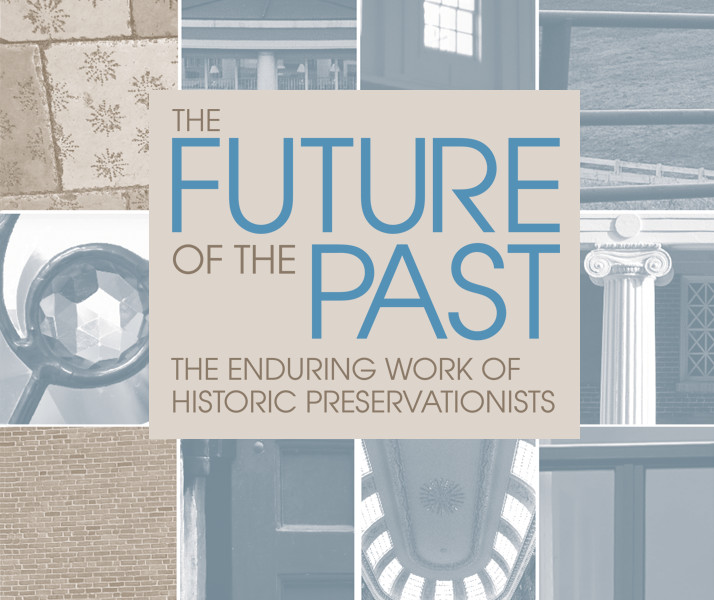
The Future of the Past: The Enduring Work of Historic Preservationists
It’s well known that women who are going places start at Hollins. But if you want to know where society has been—and how to preserve the lessons of the past—chances are there’s a Hollins woman who can answer your questions. The field of historic preservation is filled with alumnae leading the way, in their local communities and on the national level, to save and preserve the spaces and places that speak to who we are as a nation, culture, and community.
By Sarah Achenbach ’88

Hollins gathered several preservationists for an in-depth look at historic preservation: Catherine Rogers Arthur ’90, Nancy Nash Campbell ’58, Brandy Culp ’98, Langdon Edmunds Oppermann ’74, Nancy Miller Schamu ’68, and Gregory Weidman ’72. See their bios below.
What qualifies as a historic building?
Nancy Miller Schamu ’68: So much of what we do today is defined by the 1966 National Historic Preservation Act, which, among other things, established the National Register as a list of America’s historic places administered by the National Park Service for the Secretary of the Interior. In the early 1970s the National Register office established criteria for National Register listing, which are still in use today. A property or site is eligible if it was where history happened, [where] important people in our history lived or worked, defines an architectural and/or engineering style, or is a place likely to yield significant information about a period of time, community, person, etc. Generally the criteria apply to places 50 years or older, but exceptions, of course, exist. This explains why Dulles Airport and the first McDonald’s are listed on the National Register of Historic Places.
Gregory Weidman ’72: What’s interesting for me at Hampton National Historic Site [north of Towson, Md.] is that when it was designated in 1948, this was done solely for its architectural importance, which was remarkable at the time. [The nation’s first National Historic Site was established in the 1930s. The 1966 act pushed preservation to the next level.] Today, Hampton remains the only national historic site originally designated for its architectural significance alone. At Hampton, though, we interpret a much broader historical significance than just architecture. We discuss not only seven generations of the Ridgely family [prominent Maryland iron-making and farming family], but all the people who labored on the estate.
Langdon Edmunds Oppermann ’74: While there are different interpretations, you need to have some distance before you can objectively assess something. In this country, 50 years is the general guide. And it’s important to keep in mind that a building doesn’t have to have national significance to be important to a community.
How do you determine which buildings are of historical interest and worth preserving?
Nancy Nash Campbell ’58: Buildings are often saved on more than one occasion because they are, by their very nature, fragile. There are going to be buildings we lose and save, but buildings will only be saved if people care. We have seen the evolution of focused organization on a single building to quickly learning that the context, neighborhood, community center, lively main street, etc., all matter. Historic preservation today is bigger in many ways.
Schamu: In the end, property owners determine whether a historic place is preserved. The determination of significance, however, is based on historic research. Preservationists present the case for significance—often evaluated against the National Register criteria—hoping to convince the owner to save the building. The argument is often easier if a possibility for a new use exists. In some cases—easements or historic zoning—another body has a role in the final decision. A historic easement gives another entity the right to control what happens. In historic zoning, the local government has passed an ordinance defining a historic property and given a commission authority to control changes. Over 2,000 communities in America have some form of local historic designation.
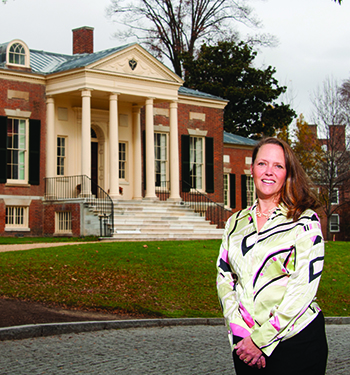
Catherine Rogers Arthur ’90 in front of the Homewood House Museum, where she serves as director and curator. The museum is located on the Johns Hopkins University campus in Baltimore. Photo by Bill McAllen.
Catherine Rogers Arthur ’90: I learned this truism during my first fall semester at Hollins in Tony Whitwell’s Survey of American Art class: “The more there were, the less there are.” Homewood, which represents the highest level of designation as a National Historic Landmark, survives because it is an extraordinary example of high-style Federal Period architecture in Baltimore. The less-refined structures—slave quarters and working-class structures—survive in fewer numbers, which only heightens their significance.
What is the good of preserving our architectural history?
Brandy Culp ’98: We have to preserve the past for the future. Architecture reflects the daily life and social habits of how we live. The systems and structures of the Nathaniel Russell House [in Charleston, S.C.] were consciously thought out for human needs. Today we are getting rid of formal dining rooms, which came into being in the mid-18th century in America, and making open floor plans because there has been a shift in how we interact. Architecture shifts as living styles shift.
Oppermann: It’s important to us as a people, especially as we become a more mobile society, that we have places that center us, remind us who we are and have been, and tell our story. We are fast losing our regional culture, its buildings, music, food, and accents. Similarly, the layout of buildings, farms, and neighborhoods are tangible elements of regional history. You expect to find a building of a certain kind in one area that is different from that in another. It has to do with regional materials and the time and culture that created it. Why is that particular building in that spot? Buildings tell us a lot about a particular area, about when it was thriving and why.
Campbell: It’s the context and meaning of a building to a community, its sense of linkage between the past, present, and future. One of the real challenges today is to make [historic house museums] lively, meaningful, and relevant to a new generation. It’s the touch-screen, interactive approach. [Last October], Colonial Williamsburg had its first-ever Halloween party on the Duke of Gloucester Street. The holiday would never have been celebrated in Colonial Williamsburg, but by all accounts, it was a great success and introduced a new generation to Colonial Williamsburg.
Weidman: The built environment is art. We can learn a great deal of cultural, intellectual, and human history through buildings. At Hampton, in addition to the mansion, so many of the original structures have survived, including two 19th-century stables, an 18th-century dairy, barns, greenhouses and, of great historical significance, two slave quarters. These buildings do not exist in a vacuum but survive as a group within the context of the estate—it’s all important when taken as a whole. The other buildings may not be as aesthetically significant but they are very important historically for their cultural significance.
Arthur: Every building represents a design problem. Through the study of a building, we have a much better sense of daily life and early craft technology. With any building constructed prior to the advent of electric light, there was a much greater awareness of the building and how carefully sited it was to take advantage of natural light. Today, our technology allows us to build a structure however and wherever we want, but with historic houses, there are limits to the engineering features and materials.
What kinds of materials are recommended in historic preservation? For example, if the wood has rotted, should it be replaced with wood or with composite material?
Arthur: The highest standards of historic preservation call for conservation of an element, but if that is not possible, replace in kind with like materials. The Maryland Historical Trust holds an easement on Homewood, which subjects all repairs and alterations to review by the state’s historic preservation officer. Homewood’s brick privy survives on the property. In 2012, we did some restoration and stabilization of the privy, [which had] significant rot in the roof framing timbers. We replaced or sistered the rot with new lumber, sandwiching the old lumber to preserve the construction technology as well. The easement doesn’t extend to the privy, but our approach does.

In the early 1970s, Nancy Miller Schamu ’68 successfully lobbied Baltimore City’s Interstate Division to reconsider a planned highway ramp that would have meant the demolition of this Baltimore row house. The ramp was rerouted, saving the home and a piece of the city’s history. Photo by Bill McAllen.
Schamu: In general, the rule is to repair, not replace. If you need to replace, use materials appropriate for the building that come closest to replicating the original fabric.
Culp: I’m a purist on this subject. I believe in conservation first; second, period restoration and the mitigation of inappropriate materials. Preventative maintenance is extremely important.
Oppermann: Materials are very misunderstood. Older buildings are creations of a different technology, and different periods of technology, sometimes in the same structure. This doesn’t mean they are inferior—often they are superior, especially older, denser wood—but they have to be approached with knowledge of the methods and with compatible materials. Mortar is particularly misunderstood. Using the correct mortar for particular brick is not an aesthetic issue; it affects the stability of the brick. A modern mortar can crack bricks over time. Also, you try not to replace, you try to repair, taking out only the part you have to. Whether you use wood or composite depends on the situation.
What happens when a design is considered ugly and not worth preserving?
Weidman: In the 1930s, preservationists were a great deal more concerned with the age of a structure—everything had to pre-date the Civil War—but it was a nearsighted point of view. People today are more perceptive—or aware, discerning, appreciative—and understand that there can be important architecture from any time period. Don’t impose your taste on the past.
Oppermann: Difficult question! If the history is ugly, do we erase the less appealing parts of our history?
Schamu: Preservation is not an aesthetic movement. Preservation seeks to identify, recognize, and retain places that relate to our heritage. In the 1970s, Victorian was considered “ugly.”
Arthur: Again, I go back to my art history courses at Hollins, where I realized that a value judgment has no place in assessing an object or building. The real judgment should be whether or not it is a good example of its type or style. For me, looking at style is inseparable from looking at craftsmanship.
Campbell: What may be valued in one region is not as valued in another. Taste does change.
Culp: Who is to say what is ugly and not ugly? Who established the aesthetic? Preservation standards exist because tastes do change. At one point in Charleston, Victorian architecture was considered ugly and was torn down in the 1920s and ‘30s.
Is it important to update the structure to make it habitable in the 21st century? How do you make that determination?
Oppermann: Yes. You always want a building occupied with some use. Buildings have always been updated. Technologies and conveniences and the expectations of society change, but buildings are there to make things work for people. They’ve pretty much all been changed (some better than others!).
Culp: We are stewards of historic structures, not owners, but at the same time, it’s important that we feel comfortable in the structure. As invasive as climate control can be, if done carefully it can preserve the interiors and objects within the structure.
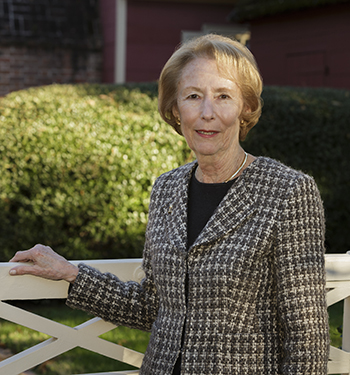
Nancy Nash Campbell ’58 in front of Lightfoot House, owned by the Colonial Williamsburg Foundation, which restored the property in 1962. She and her husband have lived there for several years. The house was built in 1730 as a double tenement and was refashioned into a single-family residence by Philip Lightfoot, a wealthy York County planter, who used the home as his residence in town. Photo courtesy The Colonial Williamsburg Foundation.
Campbell: Many [buildings] have to be habitable. There will always be buildings that are monuments, such as Mt. Vernon, where any adaptation would be frowned upon, but for the vast majority, if the building doesn’t have a current use or relevance, preserving them is significantly more challenging. We have seen buildings take on added meaning even when they are used for something other than their original use. Often, the new use sparks a new vitality in areas that may have been abandoned.
Weidman: The concept of adaptive reuse is really important. Not every place can be a museum. How can the building be restored to be an important, actively functioning part of the community in the 21st century?
Arthur: Homewood opened as a museum in 1987, and there are, of course, updates. We have electricity, data lines, and bathrooms and are in the process of looking at HVAC system updates. It’s a balance between the needs of the structure and what’s best for the collection and objects.
Schamu: This is essential, particularly for the vast majority of historic buildings that aren’t museums. If our heritage is to last, it must play a useful part in contemporary life. Preservation’s goal is to find a balance, to retain the historic character, including solar panels.
How has the thinking about historic preservation changed over the past several decades?
Culp: In Charleston, the preservation movement and ethic are strong and active, but with our methodologies and thought processes, there seems to be a shift. Like everything else, time has enhanced our efforts. Now Charleston looks inward and outward to help cities around the nation with preservation, livability, and tourism while remaining grounded in grass-roots efforts to preserve historic structures and communities.
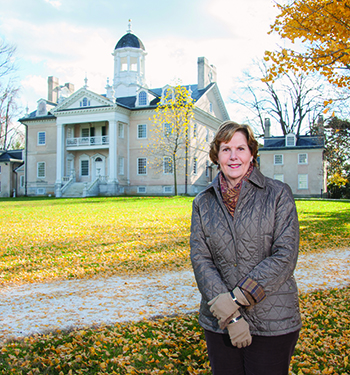
Gregory Weidman ’72, curator of the Hampton National Historic Site north of Towson, Maryland, on the grounds of the manor house on the 18th-century estate. Photo by Bill McAllen.
Weidman: From the second quarter of the 20th century forward, there has been an enormous evolution in thinking about historic preservation. My first job out of grad school was with Historic Annapolis, Inc., which was really at the forefront of the movement, beginning in the 1950s. The organization pioneered many creative techniques to assist in the preservation of individual buildings and of whole districts, including adaptive reuse, preservation easements, and historic zoning. The third quarter of the 20th century also saw a lot of innovative work in cities like Charleston and Savannah.
Schamu: Preservation has changed the way we think about our world. In the 1960s, if you told someone that you worked at the National Trust, they assumed it was a bank. Not so anymore. Preservation is more of a world view and approach to how one lives in society, using and honoring those tangible things handed down by earlier generations. Because it’s a worldview, it involves people from different disciplines: craftspeople, curators, lawyers, real estate professionals, architects, policy people, and volunteers. The field was started by women saving a historic house in nearly every city and town in America, and then was embraced by others.
Oppermann: For several decades, the great emphasis was on restoring a building to its original design, often conjecturing what a building looked like. Now we’re more cognizant of how buildings evolve, adapt to the times, and we tend to save the changes as well as keep the original. And we are much more aware of the financial and sociological benefits of preserving whole neighborhoods and business areas, instead of focusing on individual buildings. It’s a wonderful field because it’s so much a part of people’s lives.
Arthur: Technology is changing the field. We’re finding dramatically different results from the museum’s original paint analysis, which was done in the 1980s and at the time was based on observation. Now there is chemical paint analysis to further our understanding of historic paint colors. We thought Homewood’s trim color was minty green. We now know it was a Prussian blue that had a tendency to fade. When combined with the yellowing properties in the linseed oil used as a varnish, it created a green color over time.
Campbell: The biggest change is from the focus on single building and structures to communities. Urban redevelopment and bulldozing city blocks were the impetus to look at the context. The focus is on rebuilding neighborhoods and the evolution of saving modest buildings. The other huge change is the professionalism of the field. Forty years ago, when I became involved, it was a volunteer-led movement with only a handful of architects who focused on restoration. Today, there are many highly trained professionals in the preservation field. What has not changed is the willingness to work together. It is still a very collegial field. Partnerships are the key to the future.
Our Experts

Photo by Bill McAllen.
Since 2009, Catherine Rogers Arthur ’90 has served as director and curator at the Homewood House Museum, the summer estate of the Charles Carroll family, one of Maryland’s founding families. Her start in museums began in 1988 with a Short Term internship at the Maryland Historical Society with Gregory Weidman ’72. Following college, she joined the society’s curatorial staff before attending the Winterthur Program in Early American Culture; her curatorial career at Homewood began in 1997. A member of the faculty advisory committee to Johns Hopkins University’s Museums and Society minor program—Homewood House is located on Hopkins’ campus—Arthur has taught continuing studies classes on historic preservation and an annual undergraduate seminar called Curating Homewood, in which student research culminates in an exhibit on early 19th-century life. She coauthored Homewood House, which won the Maryland Historical Trust’s 2005 Heritage Book Award. In addition to overseeing the ongoing preservation efforts for Homewood House’s buildings and objects, she recently reestablished a “hint,” as she described it, of the historic estate’s orchard. Arthur is on the board for the Peale Center for Baltimore History and Architecture, which is about to begin restoration of America’s first purpose-built museum opened by Rembrandt Peale in 1814.

Photo courtesy The Colonial Williamsburg Foundation.
Chair emerita of the National Trust for Historic Preservation, Nancy Nash Campbell ’58 is among the nation’s most respected historic preservation leaders. She served as chair of the Campaign for America’s Historic Places, and she currently serves as chair of the Montpelier Foundation (home of James Madison) and board member of the Commonwealth of Virginia 2019 Commemoration Steering Committee and Art Museums of Colonial Williamsburg. Past preservation roles include commissioner, Federal Jamestown 400th Commemoration Commission; trustee, Historic Hudson Valley; and member, White House Millennium Committee to Save America’s Treasures. A Hollins trustee from 1993 until 2000, Campbell received her M.A.L.S. in Architecture and Urban Studies from Wesleyan University and in 2000 was awarded an honorary Doctor of Humane Letters from Wesleyan University. In 2014, Campbell received the Colonial Williamsburg Foundation’s Churchill Bell Award and Preservation Virginia President’s Award. Her many honors include the 2004 Louise du Pont Crowninshield Award by the National Trust for Historic Preservation and the 2008 Hollins Distinguished Alumna Award.
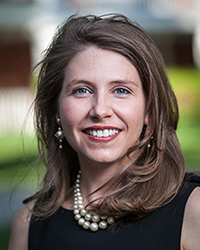
Brandy serves as curator for the Historic Charleston Foundation in South Carolina.
The 2013 Hollins Distinguished Young Alumna Award winner, Brandy Culp ’98 has served as curator for the Historic Charleston Foundation since 2006, where she oversees the preservation and conservation of the foundation’s collection of fine and decorative arts. In 2011, she curated the New York City Winter Antiques Show loan exhibition, Grandeur Preserved: Masterworks Presented by Historic Charleston Foundation, and coauthored the book of the same name. Most recently, Culp curated the traveling exhibition titled Eye for Opulence: Charleston Through the Lens of the Rivers Collection at the Society of the Four Arts, Palm Beach. Before joining the Historic Charleston Foundation, she was the Andrew W. Mellon Curatorial Fellow in the department of American art at the Art Institute of Chicago and worked at the Bard Graduate Center in the exhibitions department and at the Metropolitan Museum of Art. She holds an M.A. with an emphasis in American decorative arts from the Bard Graduate Center. Culp has written articles for Antiques & Fine Art Magazine and has given lectures for the American Decorative Arts Forum of Northern California, the Chicago Architecture Foundation, and the Decorative Arts Trust, among others.
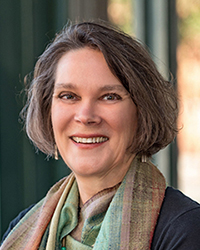
Langdon was instrumental in conducting a planning inventory of more than 2,000 buildings associated with Winston-Salem’s African-American history. Photo by Bill McAllen.
Langdon Edmunds Oppermann ’74, an award-winning architectural historian and preservation planner in Winston-Salem, North Carolina, began her career with a pioneering step: creating an independent major at Hollins in historic preservation and city planning. She received a preservation planning certificate from Cornell University’s Center for Urban Development Research, a graduate certificate from Preservation Institute: Nantucket, and worked for the Historic Fredericksburg Foundation before receiving her M.A. from George Washington University. Before entering private practice in 1987, Oppermann oversaw programs of the state historic preservation offices of both North and South Carolina. Her consulting firm specialized in environmental compliance and National Register evaluations of urban and rural properties. Among notable projects was her planning inventory of about 2,000 buildings associated with Winston-Salem’s African-American history. She currently conducts in-depth research throughout the Southeast for Historic Structure Reports and Master Plans, and works with her husband, Joe Oppermann, a nationally recognized preservation architect. A frequent lecturer, Langdon Oppermann has served on and chaired national, state, and local historic preservation boards.
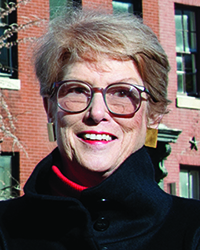
Photo by Bill McAllen.
Throughout her 45-year career, Nancy Miller Schamu ’68 has shaped historic preservation policy at the local, state, and federal levels. From 2000 until her retirement two years ago, she was executive director of the National Conference of State Historic Preservation Officers, the association of the gubernatorially appointed officials in state government who carry out the nation’s historic preservation program. Beginning in 1986, as deputy director of the National Conference, she oversaw interaction with the National Park Service on preservation policy and federal regulations, membership liaison, and government relations. She also did the principal staff work on the amendments to the 1992 National Historic Preservation Act. Board memberships include the American Easement Foundation, Preservation Action, and the Maryland review board for National Register nominations. Prior to her work at the national level, she was executive director of Preservation of Maryland and the Maryland Historical Trust Deputy State Historic Preservation Officer, among other positions. “When I was a senior about to head off to library science school, Jim Crooks, Hollins history department chairman, told me about an all-expenses-paid fellowship in history at Virginia Tech,” she recalls. “Opting for what I loved, I went to Blacksburg.” She received an M.A. in history and garnered her first job in the field after her Tech advisor connected with her first boss at a preservation conference.
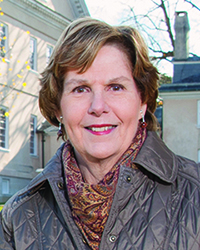
Photo by Bill McAllen.
Gregory Weidman ’72 has been curator of Hampton National Historic Site in Towson, Maryland, and Fort McHenry National Monument and Historic Shrine in Baltimore since 2008, after 11 years consulting on historic interiors for Historic Hampton, Inc. For the previous two decades, Weidman worked at the Maryland Historical Society—for more than 17 of those years as a curator. Among her several publications are Furniture in Maryland, 1740-1940: The Collection of the Maryland Historical Society and Classical Maryland, 1815-1845: Fine and Decorative Arts for the Golden Age. She has also been a guest curator and author for projects at the National Gallery of Art, U.S. Department of State, Minneapolis Museum of Art, National Museum of Racing, and National Sporting Library. Weidman lectures at museums, historical societies, educational institutions, and collectors’ groups across the country, and she has been a consultant/expert on the front desk for the Antiques Roadshow on PBS. She currently serves on the Decorative Arts Accessions Committee for the Baltimore Museum of Art and the Museum Committee of the Maryland Historical Society. After she left Hollins, which she attended with her sister, the late Lucretia Weidman ’70, Weidman was a graduate fellow in the Winterthur Museum Program in Early American Culture of the University of Delaware.
Sarah Achenbach is director of communications for Garrison Forest School in Baltimore. She is a frequent contributor to Hollins magazine.
